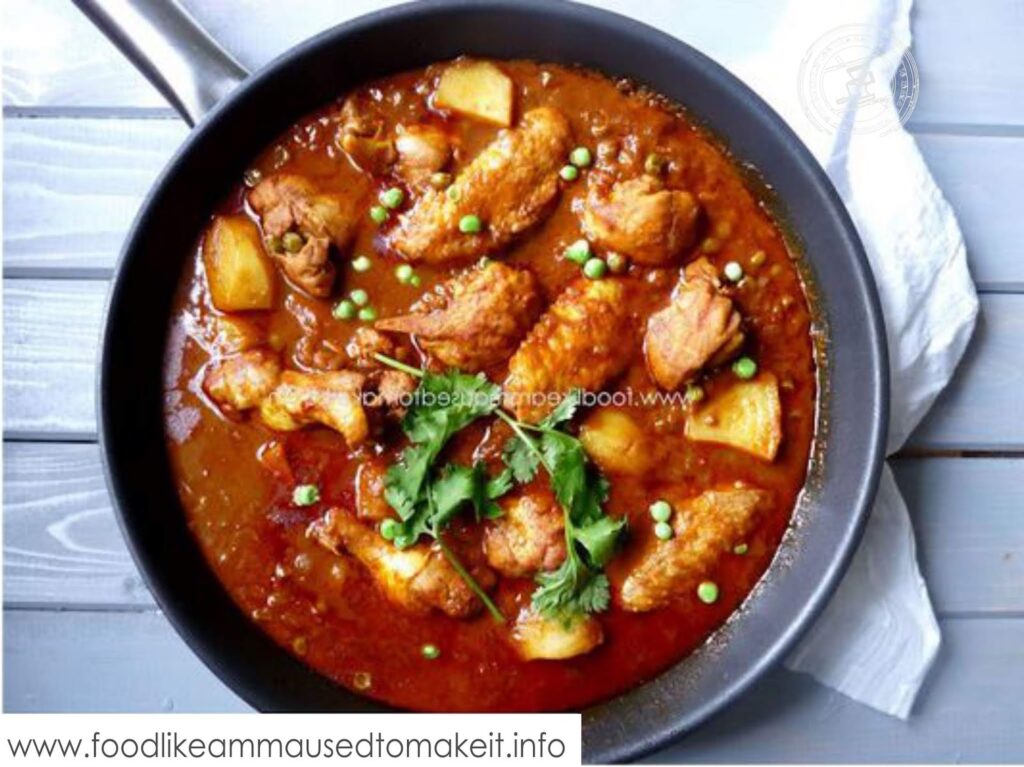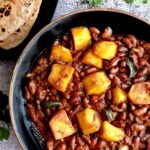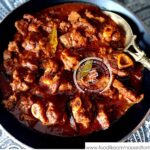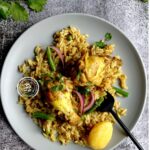The Best Durban Curry Recipes
Durban curry refers to a specific style of curry that originated in Durban, South Africa and is closely associated with the ´Indian immigrants who arrived in the region during the 19th and early 20th centuries. It is known for its vibrant flavours, bold spices, and unique cooking techniques. It is influenced by Indian cuisine but has evolved into a distinct style with its own characteristics. Durban curry is a fusion of Indian, African, and Malay flavours, reflecting the diverse cultural influences present in the region. It is characterized by its vibrant flavours, intense spiciness, and the use of a wide array of aromatic spices. The curry typically includes a variety of ingredients such as meat (commonly chicken, beef, or lamb), seafood, or vegetables, cooked in a rich and fragrant sauce.

Table of Contents
How is a Durban Curry Different from Other Curries?
What sets Durban curry apart from other types of curry is its distinctive spice blend and cooking techniques. The spice blend often includes ingredients like cumin, coriander, turmeric, cardamom, cinnamon, cloves, and chilli powder, among others. These spices are carefully combined and toasted to release their flavours before being ground into a fine powder like Durban Masala or paste.
Slow Cooking Process
Another characteristic of Durban curry is the slow cooking process, which allows the flavours to develop and meld together. The curry is often cooked for an extended period, allowing the meat or vegetables to become tender and the flavours to intensify. This slow-cooking process helps create a rich, thick sauce with complex layers of flavour.
Fiery Heat
Durban curry is known for its fiery heat, as chilli peppers and other hot spices are commonly used. However, the level of spiciness can vary depending on personal preferences and the specific recipe being used.
Authenticity
Overall, a Durban curry represents the culinary legacy of the indentured Indian labourers in Durban, combining traditional Indian cooking techniques and flavours with local ingredients and influences. It is a testament to the cultural diversity and fusion of culinary traditions that emerged in the region, making it a unique and flavorful style of curry.
The Best Durban Curry Recipes Like Amma Used To Make It
Amma, born in Durban in the 1940s, was renowned for her exceptional Durban curry. She had a special method of making this curry, passed down through generations. Her secret was in the careful selection and combination of ingredients, as well as the meticulous cooking process.
In Amma’s recipe, the sauce of the Durban curry played a vital role. It consisted of a flavorful blend of onions, ginger, garlic and tomatoes and, curry leaves. These ingredients formed the base of the sauce, creating a rich and aromatic flavour profile.
The key characteristics that set Durban curry apart from other types of curry are its heat, complexity, and use of specific spices. Durban curry tends to be spicier compared to other curries, reflecting the Indian influence and the preference for fiery flavours. The use of spices such as cumin, coriander, turmeric, and chilli powder contributes to the depth and complexity of the curry.
Spicy Durban Sugar Bean Curry Recipe
Cooks in 40 minutesDifficulty: MediumPlease leave this field emptyGET THE LATEST RECIPES Sign up to receive NEW RECIPES Email Address * We don’t spam! Read our privacy policy for more info. Check your inbox or spam folder to confirm your subscription.
Easy Durban Mutton Curry Recipe
Cooks in 45 minutesHot and Spicy Baked Beans Curry Recipe
Cooks in 15 minutesScrumptious Durban Chicken Biryani Recipe
Cooks in 70 minutes
The Ingredients commonly used in Durban Curry Recipes
- Protein (meat or vegetables): Durban curry can be made with various proteins like chicken, lamb, beef, or even seafood. Additionally, vegetable curries are also popular among vegetarians or those who prefer plant-based options.
- Curry leaves: Curry leaves are an essential ingredient that adds a distinct flavour to the curry. They are usually added during the tempering process to release their aromatic oils:
- Ginger and garlic: These ingredients provide a strong and pungent flavour to the curry. They are typically crushed or finely chopped and added to the curry base.
- Onions: Onions are commonly used in Durban curry to provide a sweet and savoury base. They are often finely chopped or sliced and sautéed until golden brown
- Tomatoes: Tomatoes add a tangy and slightly acidic taste to the curry. They are usually diced or pureed and added to the sauce for richness.
- Spices: A variety of spices are used in Durban curry, including cumin, coriander, turmeric, chilli powder, cardamom, cinnamon, and cloves. These spices contribute to the curry’s distinct flavour profile and give it its characteristic heat.
- Other flavourings: Additional flavourings such as fresh green chillies, mustard seeds, fenugreek seeds, and tamarind pulp may be used to enhance the taste and complexity of the curry.
Key Steps in Durban Curry Recipes
- Tempering: Heat oil in a pan and add mustard seeds, curry leaves, and other whole spices. This tempering process infuses the oil with the flavours of the spices and herbs.
- Sautéing: Add finely chopped onions, ginger, and garlic to the pan and sauté until the onions turn golden brown.
- Spice mixture: Create a spice mixture by combining ground spices like cumin, coriander, turmeric, chilli powder, and other desired spices. Add this mixture to the pan and cook for a short time to release the flavours.
- Protein and vegetables: Add the protein (meat or vegetables) to the pan and coat them with the spice mixture. Cook until the protein is browned or the vegetables are slightly tender.
- Sauce: Add diced or pureed tomatoes to the pan and cook until they break down and blend with the spices. This forms the base of the sauce.
- Simmering: Add water
What does Durban Curry Taste Like?
The heat level of Durban curry can vary depending on personal preference, but it is generally considered to be on the spicier side. Chilli peppers, both fresh and dried, are commonly used to add heat to the dish. However, the spice can be adjusted to suit individual tastes.
Besides the spiciness, Durban curry often has a balance of tangy and savoury flavours. The addition of tomatoes, onions, garlic, and ginger provides a depth of taste, while the use of coconut milk or yoghurt can add a creamy and slightly sweet undertone to the curry.
What is the Difference Between Durban Curry and Malay Curry?
| Durban Curry | Malay curry | |
| Origins | Durban curry is a style of curry that developed in the city of Durban, South Africa. It is heavily influenced by the large Indian community residing in the region. | The Cape Malay curry is influenced by the descendants of Indonesian, Malaysian, and African origins in the Cape region. |
| Flavour Profile | Durban curry is known for its robust and spicy flavours. It typically features a complex blend of spices, including coriander, cumin, fennel, turmeric, cardamom, and cloves. It often incorporates chilli peppers, giving it a notable heat. Durban curry is rich, aromatic, and has a bold flavour profile. | Malay curry tends to have a milder and slightly sweeter flavour compared to Durban curry. It combines aromatic spices like cinnamon, cardamom, cloves, and ginger with a touch of sweetness from ingredients such as coconut milk, apricot jam, or raisins. Malay curries r raisins. Malay curries often have a subtle blend of flavours with less emphasis on spiciness. |
| Ingredients | Durban curry commonly includes meat such as lamb, chicken, or beef, along with vegetables like potatoes and tomatoes. It may also incorporate lentils or beans. The use of spices is extensive, and the curry is typically cooked in vegetable oil or ghee. | Malay curry often features meat, such as chicken, lamb, or fish, along with vegetables like onions, potatoes, and carrots. It frequently incorporates fruits such as apricots or dried peaches for sweetness. Coconut milk is a key ingredient in Malay curry, giving it a creamy and mild base. |



